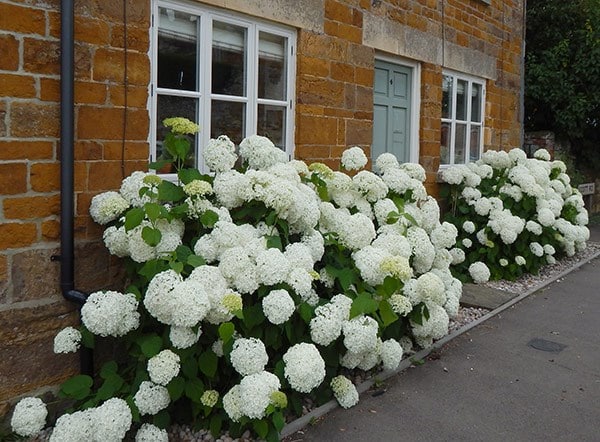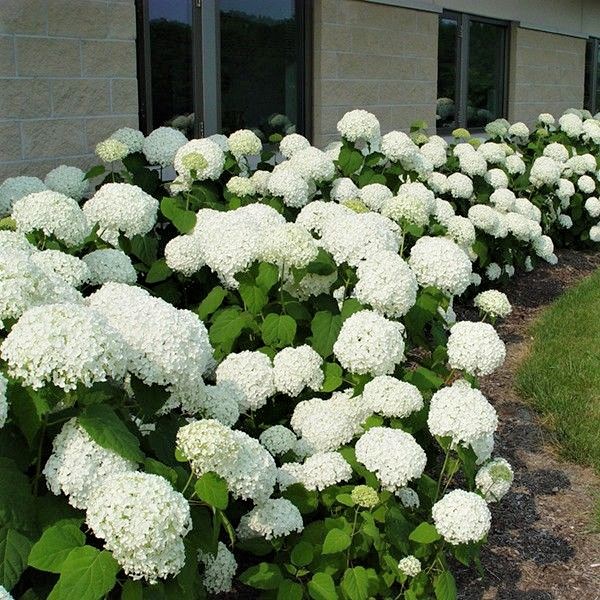Grow Your Own Hydrangea Annabelle
Introduction
Hydrangea Annabelle is a popular garden shrub known for its large, white blooms. It is a relatively easy plant to grow, and with proper care, it can thrive in many different climates.
In this blog post, we will discuss the basics of growing Hydrangea Annabelle, including:
- Choosing the right location
- Planting and caring for your hydrangea
- Propagating Hydrangea Annabelle
- Pests and diseases
Choosing the right location
Hydrangea Annabelle prefers partial shade, but it can also tolerate full sun. If you live in a hot climate, you may want to plant your hydrangea in a location that gets morning sun and afternoon shade.
The soil should be well-drained and slightly acidic. If your soil is alkaline, you can add peat moss or sulfur to acidify it.
Planting and caring for your hydrangea
Hydrangea Annabelle should be planted in the spring or fall. When planting, dig a hole that is twice as wide and as deep as the root ball. Backfill the hole with soil, and water well.
Hydrangea Annabelle is a relatively low-maintenance plant. Water it regularly, especially during hot, dry weather. Fertilize your hydrangea in the spring with a balanced fertilizer.
Propagating Hydrangea Annabelle
Hydrangea Annabelle can be propagated by taking softwood cuttings in the spring or summer. To take a cutting, choose a healthy branch that is about 6 inches long. Remove the bottom leaves, and dip the cutting in rooting hormone.
Plant the cutting in a pot filled with a well-draining potting mix. Water the cutting well, and keep the soil moist. The cutting should root in about 4-6 weeks.
Pests and diseases
Hydrangea Annabelle is relatively resistant to pests and diseases. However, it can be susceptible to aphids, scale, and powdery mildew. If you see any pests or diseases on your hydrangea, treat them promptly with an appropriate insecticide or fungicide.
Conclusion
Growing your own Hydrangea Annabelle is a rewarding experience. With proper care, your hydrangea will bloom for many years to come.
If you're looking for a beautiful and easy-care shrub to add to your garden, look no further than the hydrangea arborescens 'Annabelle'. This popular variety is known for its large, white blooms that can reach up to 10 inches in diameter. Annabelle hydrangeas are also relatively low-maintenance, requiring only moderate watering and occasional pruning.
If you're interested in learning more about this amazing plant, I recommend visiting . This website is a great resource for information on hydrangea arborescens 'Annabelle', including its care requirements, planting tips, and pest and disease management.
In addition to providing comprehensive information on Annabelle hydrangeas, also features beautiful photos of this plant in bloom. These photos will give you a good idea of what to expect when you add this shrub to your own garden.
So what are you waiting for? Visit today to learn more about the hydrangea arborescens 'Annabelle'!
FAQ of hydrangea arborescens annabelle
Q: What are the best conditions for growing Hydrangea arborescens 'Annabelle'?
A: Hydrangea arborescens 'Annabelle' is a hardy shrub that can be grown in a variety of conditions, but it prefers moist, well-drained soil and full sun to partial shade. It is tolerant of some drought, but will perform best if it is watered regularly during the summer months.
Q: How do I prune Hydrangea arborescens 'Annabelle'?
A: Hydrangea arborescens 'Annabelle' blooms on new wood, so it can be pruned in late winter or early spring. The best time to prune is just before the plant breaks dormancy. You can prune the shrub back to the ground, or you can simply remove any dead, damaged, or diseased branches.
Q: How do I care for a strong Annabelle hydrangea?
A: To keep your Annabelle hydrangea strong and healthy, be sure to water it regularly, especially during the summer months. You should also fertilize it once a year in the spring with a balanced fertilizer. In addition, you should prune the shrub as needed to maintain its shape.
Q: Does hydrangea Annabelle spread?
A: Yes, hydrangea Annabelle can spread by suckering. This means that it will send up new shoots from the roots. If you do not want your hydrangea to spread, you can control it by mowing or digging up the suckers.
Q: What are some common problems with Hydrangea arborescens 'Annabelle'?
A: The most common problems with Hydrangea arborescens 'Annabelle' are leaf spot, powdery mildew, and aphids. Leaf spot is a fungal disease that can cause brown spots on the leaves. Powdery mildew is a fungal disease that can cause a white powdery coating on the leaves. Aphids are small insects that can suck the sap from the leaves. If you notice any of these problems, you can treat them with a fungicide or insecticide.
Image of hydrangea arborescens annabelle
5 different images of "hydrangea arborescens annabelle" from Pinterest:
- Image 1: A full grown Annabelle hydrangea bush with large, white blooms.
- Image 2: A close-up of the blooms of an Annabelle hydrangea, showing their delicate texture and pale green centers.
- Image 3: A row of Annabelle hydrangea bushes in bloom, creating a beautiful white border.

- Image 4: A single Annabelle hydrangea bloom in full bloom, with its petals cascading down.

- Image 5: A pot of Annabelle hydrangea plants, ready to be planted in a garden.

Post a Comment for "Grow Your Own Hydrangea Annabelle"